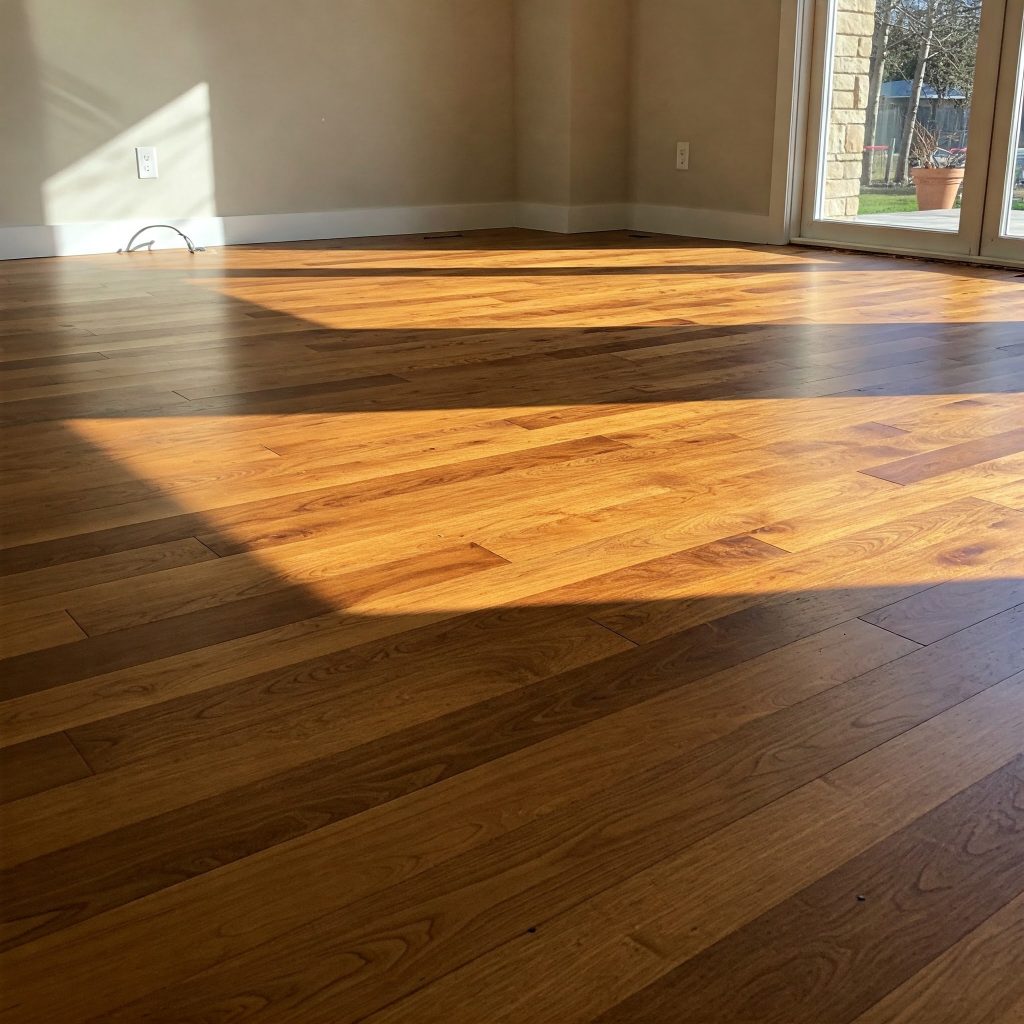
When it comes to flooring options, engineered hardwood has become a popular choice for homeowners who want the beauty of real wood with added versatility and durability. But what exactly is engineered hardwood flooring, and how does it differ from solid hardwood? In this blog post, we’ll dive into everything you need to know about engineered hardwood, including its construction, benefits, drawbacks, and best uses.
What is Engineered Hardwood Flooring?
Engineered hardwood flooring is a multi-layered flooring product designed to mimic the look and feel of solid hardwood while offering greater stability and resistance to moisture. It consists of:
- Top Layer (Veneer): A thin layer of real hardwood, which gives the flooring its authentic appearance and texture. This layer can vary in thickness, typically ranging from 0.6 mm to 6 mm.
- Core Layers: Multiple layers of plywood, high-density fiberboard (HDF), or softwood, which provide stability and prevent the flooring from warping or expanding due to moisture or temperature changes.
- Bottom Layer: A backing layer that adds additional stability and protects the core from moisture.
This layered construction makes engineered hardwood more adaptable to different environments than solid hardwood, while still offering the natural beauty of real wood.
How is Engineered Hardwood Different from Solid Hardwood?
While both engineered and solid hardwood flooring feature a top layer of real wood, they differ in construction and performance:
- Solid Hardwood: Made from a single piece of wood, solid hardwood is thick and can be sanded and refinished multiple times. However, it’s more susceptible to moisture and humidity, limiting its use in certain areas.
- Engineered Hardwood: With its layered construction, engineered hardwood is more stable and resistant to moisture, making it suitable for a wider range of applications, including basements and over concrete subfloors.
Benefits of Engineered Hardwood Flooring
- Moisture Resistance: Engineered hardwood is less prone to warping or cupping due to humidity or moisture, making it ideal for areas like basements, kitchens, and bathrooms (with proper sealing).
- Versatility: It can be installed over a variety of subfloors, including concrete, radiant heating systems, and existing flooring.
- Ease of Installation: Engineered hardwood is available in click-lock or glue-down options, making it easier and faster to install than solid hardwood.
- Cost-Effective: While still an investment, engineered hardwood is often more affordable than solid hardwood, especially for exotic wood species.
- Refinishing Potential: Depending on the thickness of the top veneer, engineered hardwood can be sanded and refinished a few times, extending its lifespan.
- Aesthetic Appeal: It offers the same natural beauty and warmth as solid hardwood, with a wide range of species, stains, and finishes to choose from.
Drawbacks of Engineered Hardwood Flooring
- Limited Refinishing: Unlike solid hardwood, engineered hardwood can only be refinished a few times due to its thinner top layer.
- Quality Varies: The durability and lifespan of engineered hardwood depend on the quality of the veneer and core layers. Lower-quality options may not last as long.
- Not Fully Waterproof: While more moisture-resistant than solid hardwood, engineered hardwood is not completely waterproof and can be damaged by standing water.
Best Uses for Engineered Hardwood Flooring
Engineered hardwood is a versatile flooring option that works well in many areas of the home:
- Living Rooms and Bedrooms: Its natural beauty and warmth make it a great choice for main living areas.
- Kitchens and Dining Rooms: Its moisture resistance makes it suitable for areas prone to spills.
- Basements: Engineered hardwood can be installed over concrete subfloors, making it ideal for below-grade spaces.
- Over Radiant Heating: Its stability makes it compatible with radiant heating systems, unlike solid hardwood.
Installation Methods for Engineered Hardwood
Engineered hardwood can be installed using several methods, depending on the product and subfloor:
- Floating Floor: Planks are clicked together and laid over an underlayment without being attached to the subfloor. This is the easiest and fastest installation method.
- Glue-Down: Planks are adhered directly to the subfloor using adhesive. This method provides a more stable and permanent installation.
- Nail-Down or Staple-Down: Planks are secured to a wooden subfloor using nails or staples. This method is less common for engineered hardwood but can be used for thicker planks.
How to Choose the Right Engineered Hardwood
When shopping for engineered hardwood, consider the following factors:
- Veneer Thickness: A thicker veneer (4–6 mm) allows for more refinishing and adds to the longevity of the flooring.
- Core Material: Look for high-quality plywood or HDF cores for better stability and durability.
- Finish: Choose between pre-finished (factory-finished) or site-finished options. Pre-finished flooring is more convenient, while site-finished allows for custom staining.
- Species and Color: Select a wood species and stain that complements your home’s style and décor.
- Warranty: Check the manufacturer’s warranty to ensure you’re getting a quality product.
Maintenance and Care
Engineered hardwood is relatively low-maintenance, but it still requires proper care to keep it looking its best:
- Regular Cleaning: Sweep or vacuum regularly to remove dirt and debris. Use a damp mop with a wood floor cleaner for deeper cleaning.
- Avoid Excess Moisture: Wipe up spills immediately to prevent water damage.
- Protect from Scratches: Use furniture pads and area rugs to protect high-traffic areas.
- Refinish When Needed: Depending on the wear and tear, you may need to sand and refinish the top layer every few years.
Final Thoughts
Engineered hardwood flooring offers the perfect blend of beauty, durability, and versatility, making it an excellent choice for homeowners who want the look of real wood with added practicality. Whether you’re renovating a single room or your entire home, engineered hardwood provides a timeless and elegant solution that can stand up to the demands of modern living.
By understanding its construction, benefits, and best uses, you can confidently choose engineered hardwood flooring that suits your style, budget, and lifestyle.

Leave a Reply